Flanked by the Museum of Fine Arts and the Palace of Art and situated at the entrance to the City Park, Budapest’s Heroes’ Square stands in honor and memory of the great leaders in Hungary’s history.
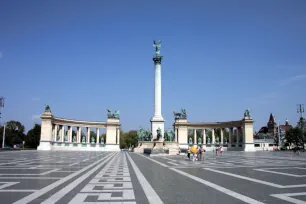
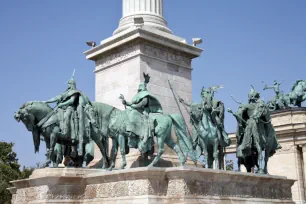
Heroes’ Square (or Hősök tere in Hungarian) is one of the most-visited attractions in Budapest. Many tourists arrive here by metro, an attraction in itself: the M1 metro line that stops at Heroes’ Square is one of the world’s oldest (it opened in 1896) and has even been declared a World Heritage Site.
Both Heroes’ Square and Városliget, the adjoining city park, were created at the end of the nineteenth century to commemorate the thousandth anniversary of the Magyar conquest of Hungary in 895. Since many of the attractions weren’t ready in time, the festivities were held one year late, in 1896. The square only received its current name in 1932, three years after the completion of the Millennium Monument.
Since its creation, Heroes’ Square has been the site of numerous special events, including many Socialist holiday celebrations staged during the country’s Communist era. In 1989, it was the site of the ceremonial reburial of Imre Nagy, leader of the uprising against the Soviet occupation in 1956.
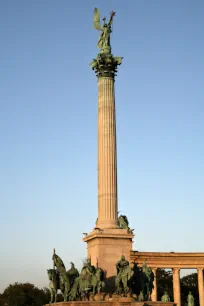
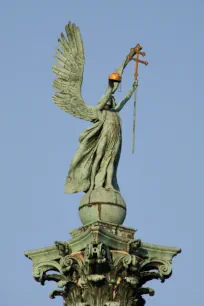
Millennium Monument
At the center of Heroes’ Square stands the Millennium Monument, designed in 1894 by Albert Schickedanz and completed thirty-five years later. The many statues were designed by György Zala.
Soaring above Heroes’ Square is the Millennium Column, the focal point of the Millennium Monument. The column is topped with a statue of the archangel Gabriel.
Behind the column is a semicircular colonnade with statues of famous men who made their mark on Hungarian history. Statues atop the colonnades symbolize War, Peace, Work and Welfare, and Knowledge and Glory.
Around the base of the monument are a number of equestrian statues honoring the seven chieftains of the Hungarian tribes who, led by Árpád, conquered the area now known as Hungary.
Museum of Fine Arts
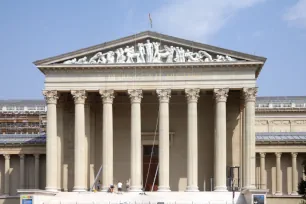
On the north side, Heroes’ Square is bordered by the Museum of Fine Arts, a museum with an exquisite collection of European art, housed in a monumental classical building.
The museum’s gallery contains works from old masters including Raphael, Titian, El Greco, Goya, Vermeer, Rembrandt, Dürer and Rubens. The Museum of Fine Arts also has a collection of sculptures as well as artifacts from the Middle Ages, the Antiquity and Egypt.
The building itself, an imposing neoclassical structure, is pretty impressive. It was also designed by Albert Schickedanz with the help of Fülöp Herzog, his associate.
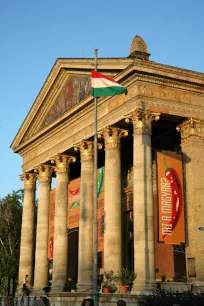
Palace of Art
Opposite the Museum of Fine Arts stands the Műcsarnok (Palace of Art), another classical temple that nicely complements the design of the Museum of Art. The Műcsarnok is an exhibition hall, mainly used to host temporary exhibitions.
The building is another creation of Albert Schickedanz, also in cooperation with Fülöp Herzog. The Műcsarnok has a magnificent facade with colossal gilded columns. The tympanum is decorated with a colorful mosaic that shows St. Stephen as a patron of the arts.

